Cruising on a Catamaran: What It’s Really Like to Take the Plunge
As an Amazon Associate, we earn from qualifying purchases. We also earn from other affiliate websites. See our full disclaimer.
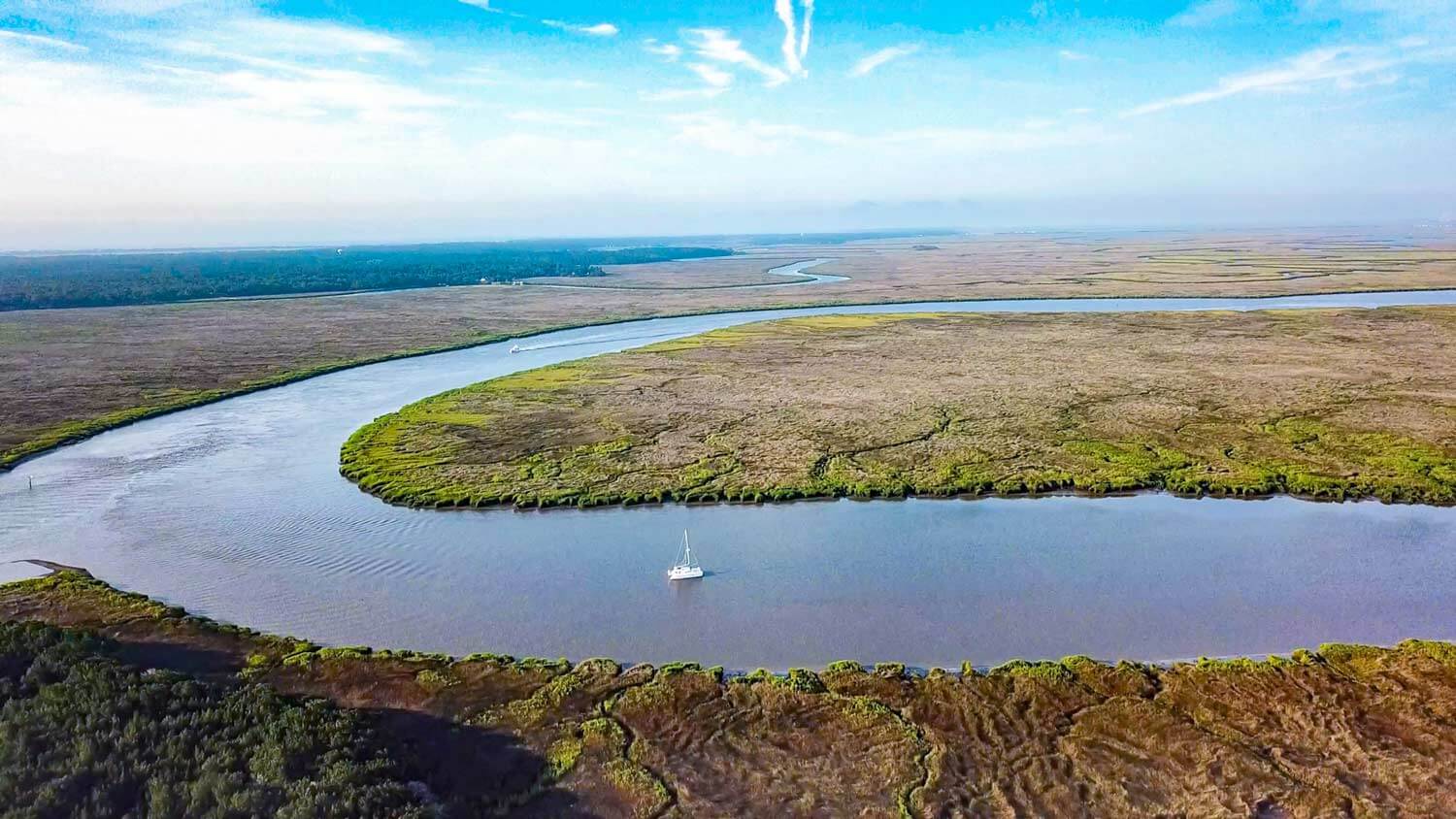
What is it really like to get started cruising on a catamaran? There are a lot of unknowns when you first set out of the water. If you are looking for a glimpse into the cruising lifestyle, this is our recap of our first sailing trip and what we learned.
Off the Dock
When we left Brunswick, Georgia for our first trip as the captains on our catamaran, we were bound for Savannah along the Intracoastal Waterway.
Leaving the dock for the first time, we had a lot of questions. Would we have enough water? Would we survive the heat? Would we struggle with anchoring?
We made it to Savannah, but not without acquiring new knowledge and experiencing a few surprises. Here are some insights into our first trip cruising up the coast on our Lagoon catamaran.
Managing the Heat on a Catamaran
Going into this trip, we were concerned about the high temps. First off, here is how we manage heat at the dock versus off the grid.
Cooling the Boat at Dock
We have a portable 8,000 BTU air conditioner on the boat. We run this when connected to shower power at the dock. Although it doesn’t seem like much, everyone takes notice when it’s not running (even the cat).
Cooling the Boat Off-the-Grid
We have a decent battery bank, but not the kind of power you need to run an air conditioner continuously. Off the grid, we rely on the breeze and 12-volt fans to keep the air moving.
The Reality of Staying Cool Without AC
To our surprise, the waterway in Georgia in the middle of July wasn’t unbearable.
Don’t get me wrong; it’s hot. But instead of feeling like I was on hell’s doorstep, I felt more like I was down the street.
The sun was shining, but the breeze was plentiful. The shade in the cockpit kept us cool, along with some decent headwear.
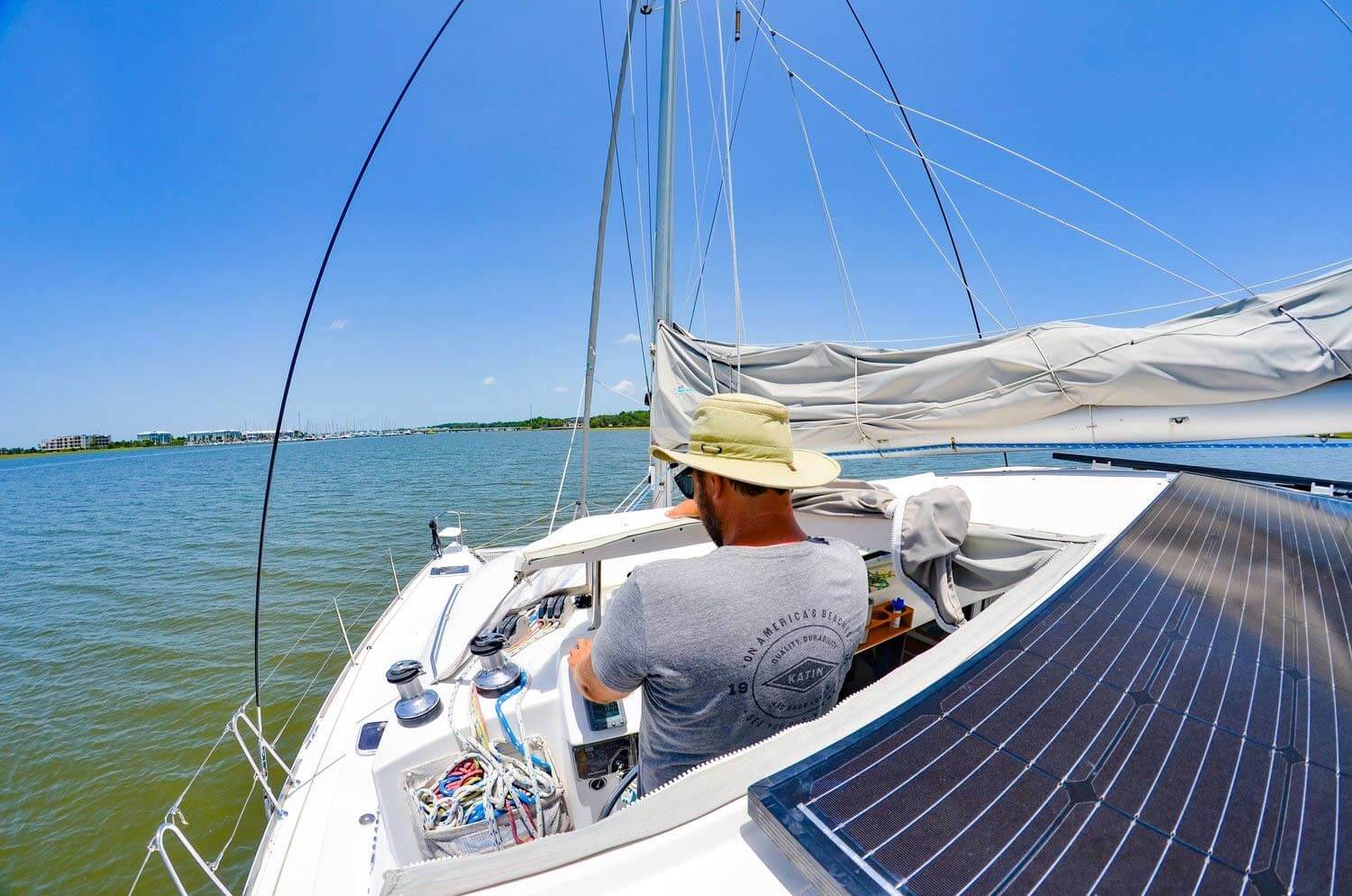
The nights were even better. As the sun sank each evening, we were met with a lovely land breeze.
The breeze catchers over our hatches pushed the cool breeze down and through the boat. I couldn’t believe it when I had to reach for my blanket one night!
We have wind scoops from Breeze Boosters for our catamaran. They made our list of 10 Sailboat Essentials, and we highly recommend them.)
What to Wear Sailing
After the first day on the water, my cotton clothes were sweaty, stinky, and covered in sunscreen. One look at them, and I decided to bring out a swimsuit top and swim leggings for the rest of the trip.
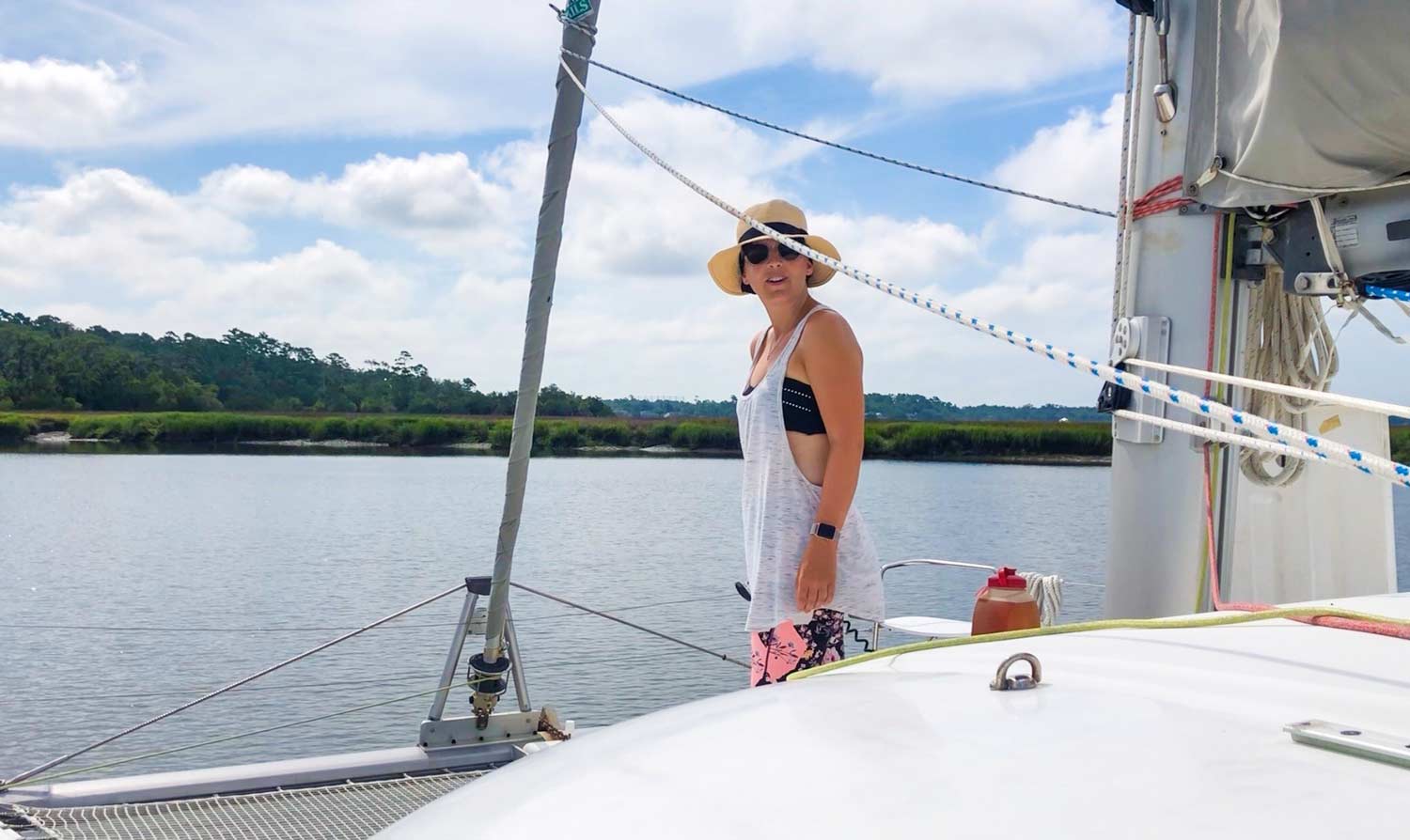
I rinsed out my swimsuit top in the shower, leaving less stinky clothes. Swim leggings cut down on sunscreen usage.
I also grabbed the coolest, breathable tank I could find when I was getting a little too much sun.
After day two, Ross opted not to even worry with a shirt until the afternoon sun came around.
READ NEXT: Learn more about what clothes work best on a sailboat in our post on what to wear sailing.
Conserving Water on a Boat
Water on a boat is gold. And I will be the first to admit I am terrible at water conservation.
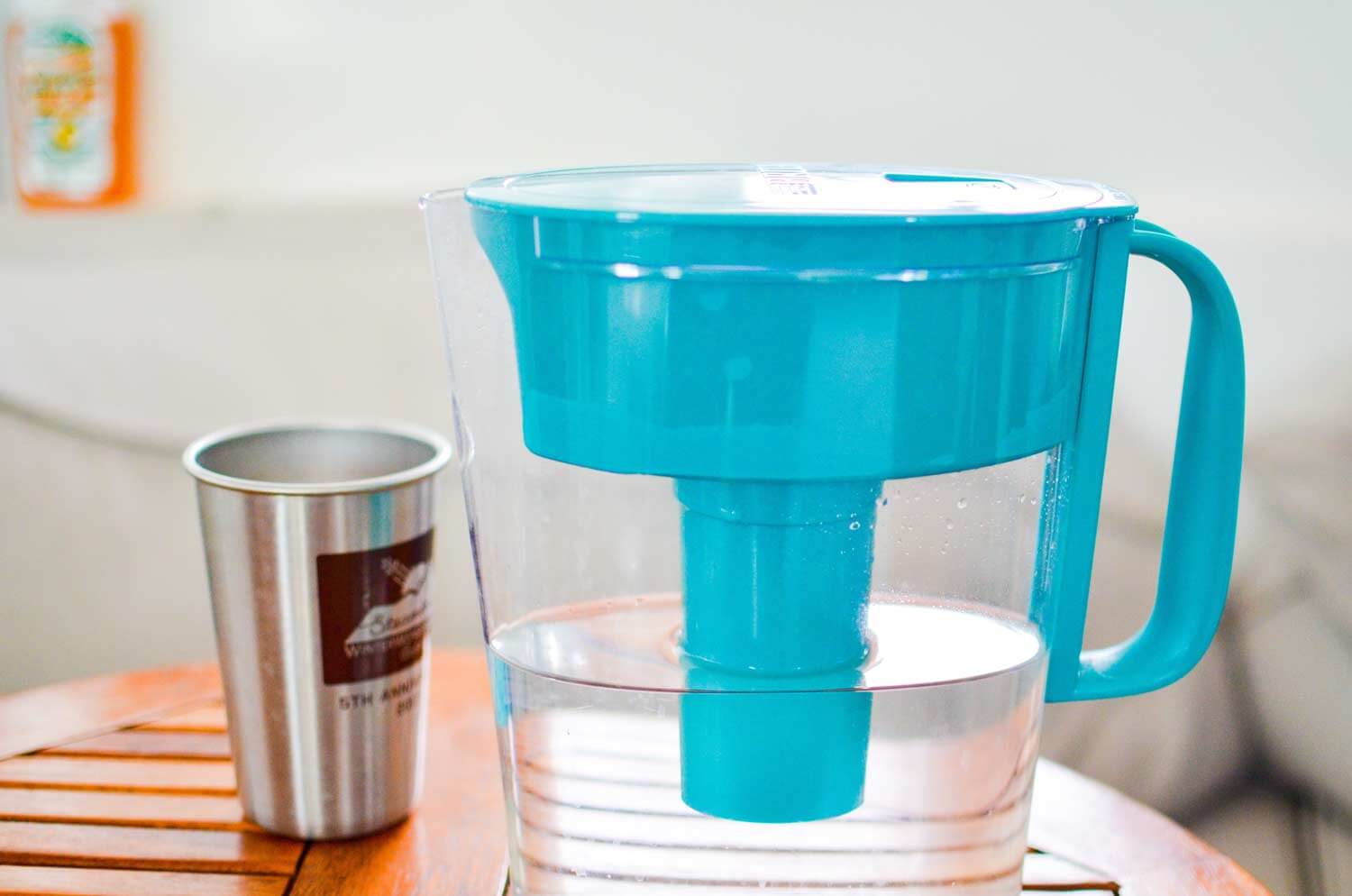
In five days, we used 70 gallons of water. Oops.
That’s an average of 14 gallons a day, twice my daily goal for us.
Our Main Uses of Water
- drinking/making iced tea
- making ice
- cooking and cleaning
- showering
- flushing the toilets
- watering the cat (he gets thirsty too!)
Adjustments to Save Water
After a couple of days, we made some changes.
- Saltwater rinse the dishes on the sugar scoop. (Meaning I had to quit being lazy!)
- Consider water needs when strategizing meals (cooking and clean up).
- Use seawater to flush the toilet.
- I only washed my hair every other day.
We used roughly 16 gallons the first and second day on the water. Then we reduced it to about 12 gallons — definitely an improvement.
I’m sure water will be a challenge for us without a water maker. Here’s hoping we are up for it!
READ NEXT: You might also like our tips for Saving Water on a Boat.
A Cruising Life is a Healthier Life
At least when it comes to eating! I can’t believe how much better (and how much less) we ate while on the water.
Here are a few things that contributed to this welcome change.
Limited Resources
If you don’t feel like cooking, you can’t run out and grab a pizza. So if you want a decent meal, that’s motivation to plan ahead.
Breakfast featured our usual morning oatmeal (with all the fixings).
I thought about our fresh ingredients on hand for lunch and dinner and built a meal from there.
Staying Busy
Being occupied most of the day leads to less time snacking. When it was mealtime, we ate. We only snacked when we were actually hungry.
Dinner is an Event
I was encouraged to make dinner an exciting part of the trip — sort of a celebration of cooler temps and a successful anchoring at the end of each day.
I aimed for tasty meals that were still light on water usage.
This included a veggie/herb blend with couscous one night and a quinoa Mexican salad another.
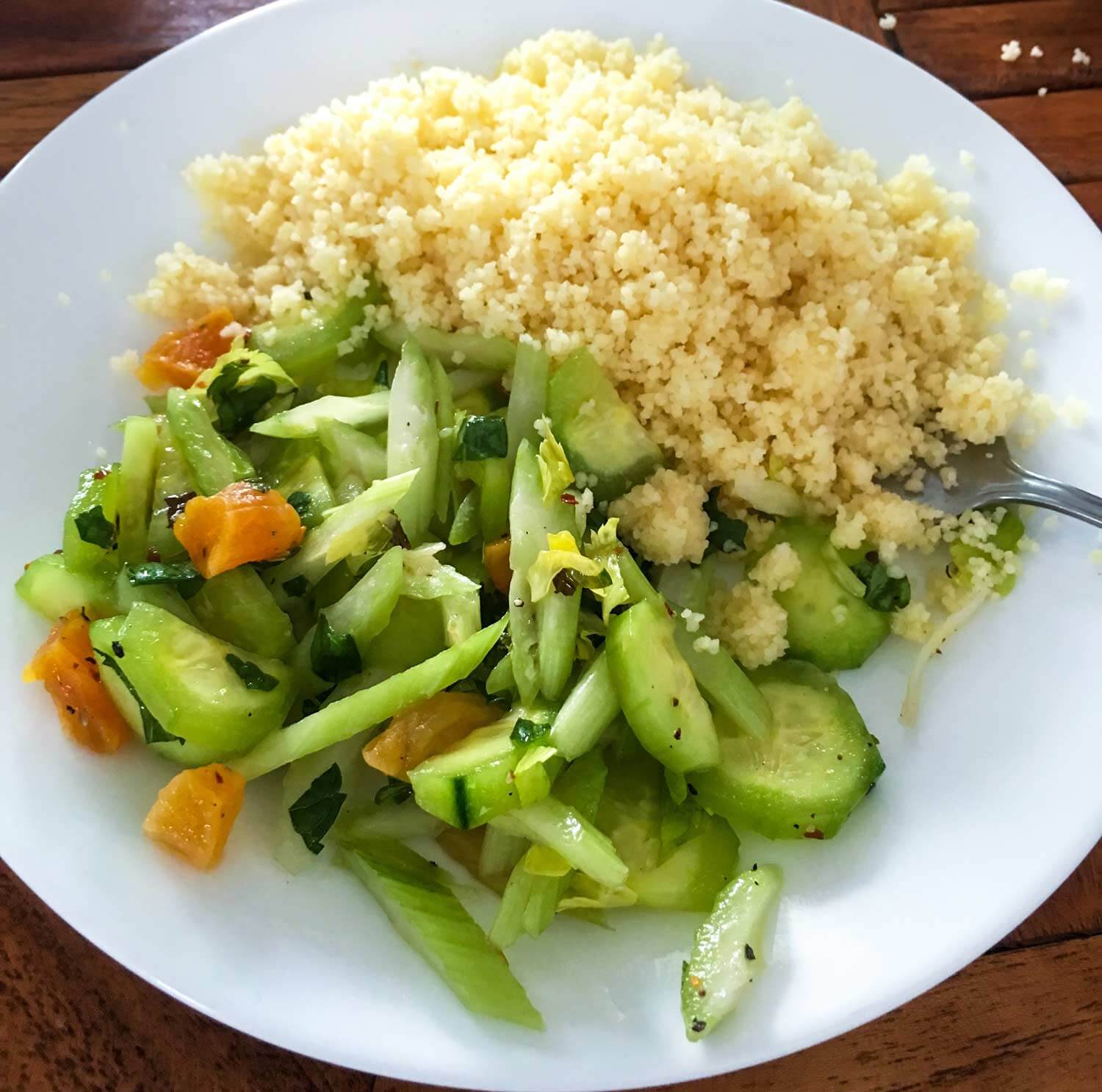
We looked forward to dropping the hook each evening, cracking a beer, and enjoying dinner in the cockpit or on the trampoline with the sights and sounds of the anchorage as a backdrop.
READ NEXT: You might also like Flexible Meals on a Boat and 5 Simple Ideas for Breakfast on a Boat.
Early to Bed
Being in the sun and on the water left us exhausted at the end of the day. Instead of watching a movie, snacking, and reaching for another glass of wine, we would shower and head to bed.
I’m starting to understand why ‘Cruiser’s Midnight’ (which I think is 9 pm) is a thing.
Things Break on a Catamaran
Our second to last evening before reaching Savannah, we realized our starboard engine didn’t have any propulsion. We discovered this while trying to drop anchor for the third time, perplexed about why the boat was spinning when in reverse.
This was a frustrating point, as we had just started to dial in our anchoring communication.
What We Learned
Things will happen out on the water, and we need to be able to stay calm, breathe, and deal with them. This is especially true when you are first getting started cruising. Until you gain a decent amount of experience, almost everything you do will give a result you haven’t seen yet.
After we became aware of our engine issue, things went much smoother anchoring.
Being short an engine was a challenge, but it was manageable once we understood the problem.
Hats off to Captain Ross for docking us and getting us in the travel lift in Savannah on one engine.
Preparation is Crucial
Whether you’re crossing an ocean or going a few nautical miles, it’s essential to do your research.
We are lucky to live in an age where resources like Active Captain and the Waterway Guide exist. These applications are overlayed in Aqua Maps, which we use on the iPad to research our route, anchorages, and marinas before our sailing trip.
Real-Life Route Planning
We had to transit a shallow, narrow area of the waterway so encouragingly named “Hell Gate.”
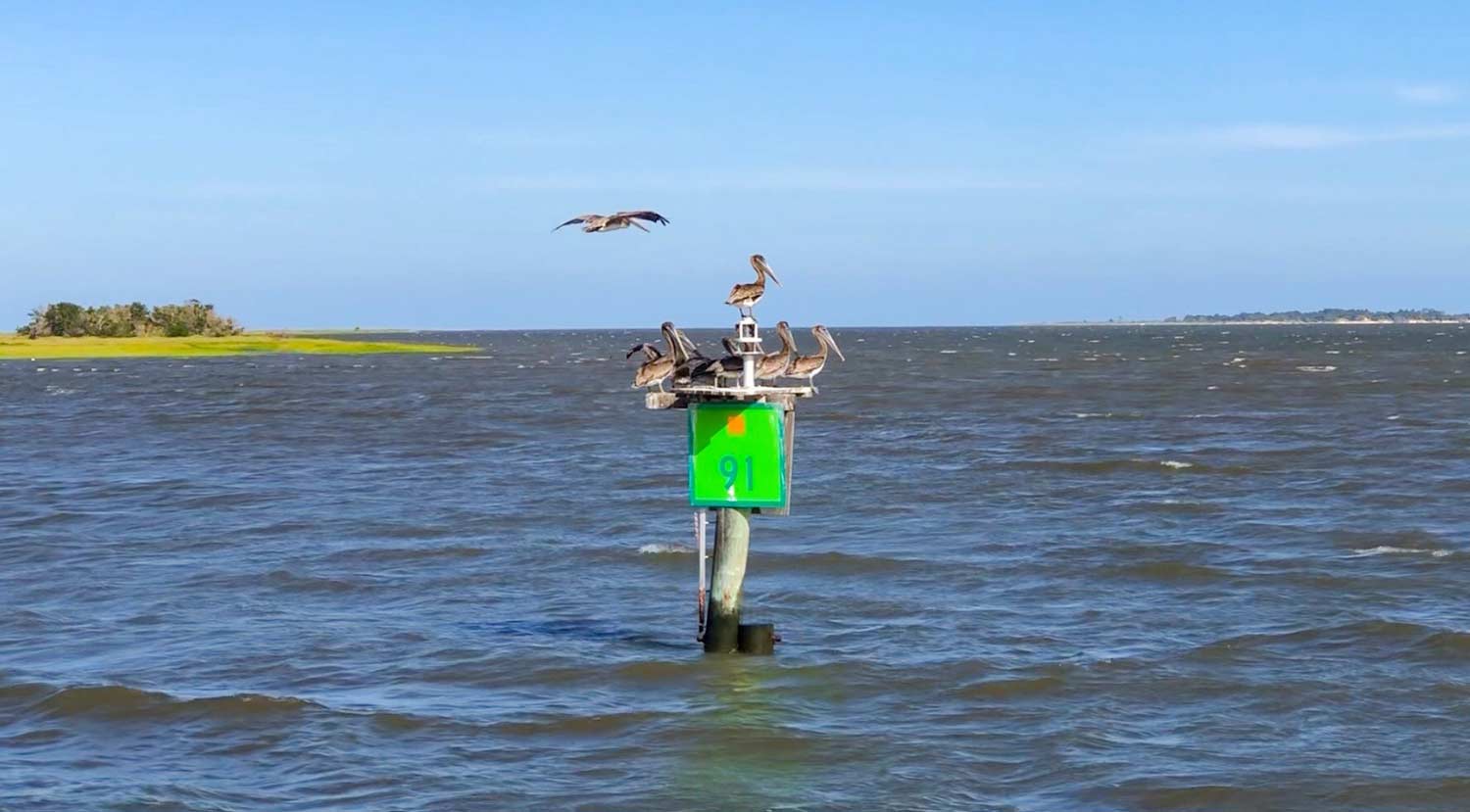
Captain Ross did a lot of reading to prepare us for this. He read other boater comments and downloaded Bob423’s route*.
He also researched the current, weather, and tides to make sure we could enter at the best time. With one engine, we would need the current with us as long as possible.
It was a piece of cake with his gained knowledge, but without it, we could have easily run aground.
Nature Is Pretty Amazing
The best part of being on the anchor is finding lovely little anchorages to drop the hook for the night — no other boats around, just the sound of the birds and maybe a dolphin’s blowhole.
Connecting with nature this way is both calming and healing to the soul.
Even the storm clouds, though ominous, were beautiful over the Georgia marshes.

This trip gave us just a taste of why many people we meet say the 999 problems with owning a sailboat are worth it.
We can’t wait to experience more of those moments.
*Bob423 is a downloadable ICW route by an experienced boater that you can overlay on your chartpotter or other marine charting application.
Want more tips on how to get started cruising on a boat?
For more on the reality of living aboard and learning how to live on the water, view our guide.
